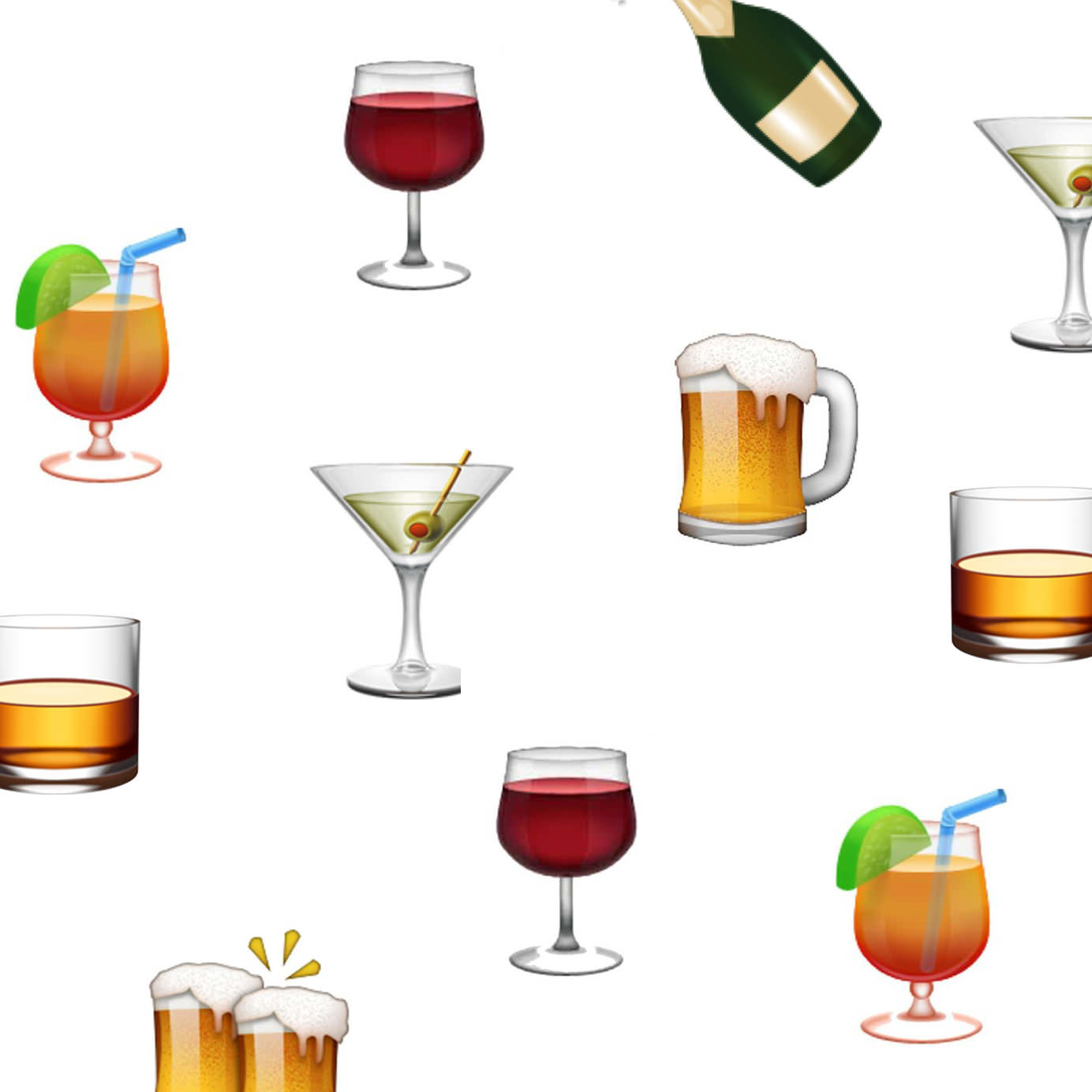We’re living in a visual era. Emojis fill text messages, tweets, and Instagram captions as if people are reverting to some sort of digital version of pyramid hieroglyphics. And the way we communicate about alcohol is no different.
There are nine common alcohol emojis: the Martini glass, tiki glass, wine glass, sake carafe, beer mug, cheersing beer mugs, sparkling wine bottle, clinking Champagne glasses, and the whiskey glass. The way we use these emojis gives insight into the way that we drink, or at least the way we communicate about drinking. We looked at Google Trends data to distill down which emojis are used the most at what time of the year.
To make the ranking, we first set the search results to the United States over the past five years. For the emojis that were released in 2014 (the sparkling wine bottle) and 2016 (the Champagne flutes and the whiskey glass), we used the data range available. While not a perfect measuring tool, Google Trends makes a clear statement about online activity at each moment in time.
Here are the results, in order of how they appear on the Apple keyboard.
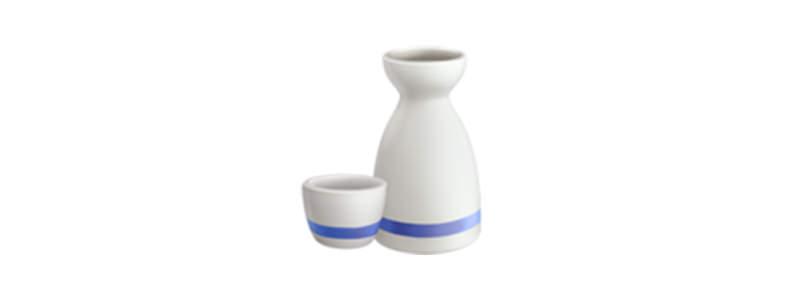
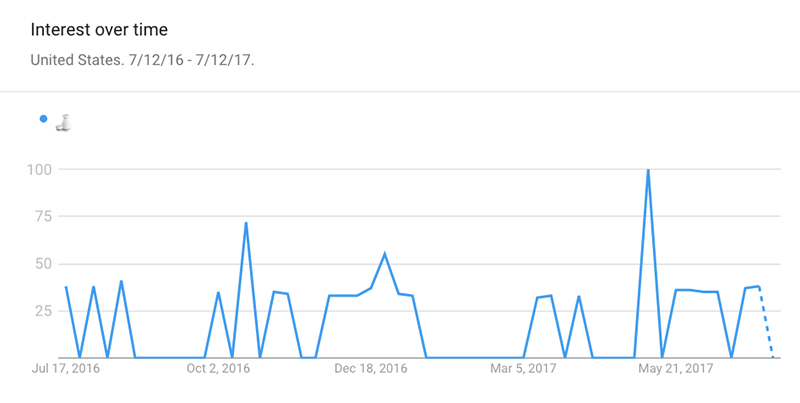
The sake carafe, which was introduced in 2012, has clear periods of use and clear periods of neglect. Over the past 12 months, it had relatively zero use from September to October. There were some spikes in October, then sustained popularity during November and December. Interest doesn’t pick up again until late May with spring in full swing.
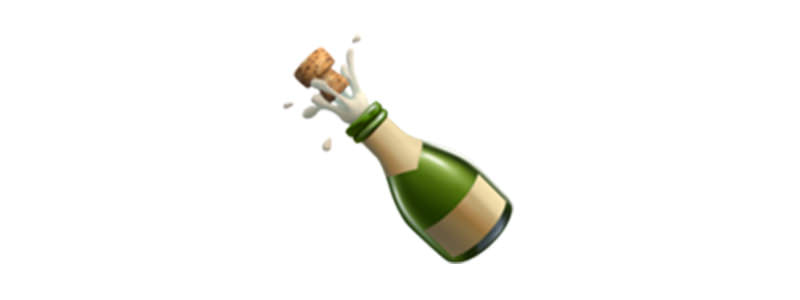
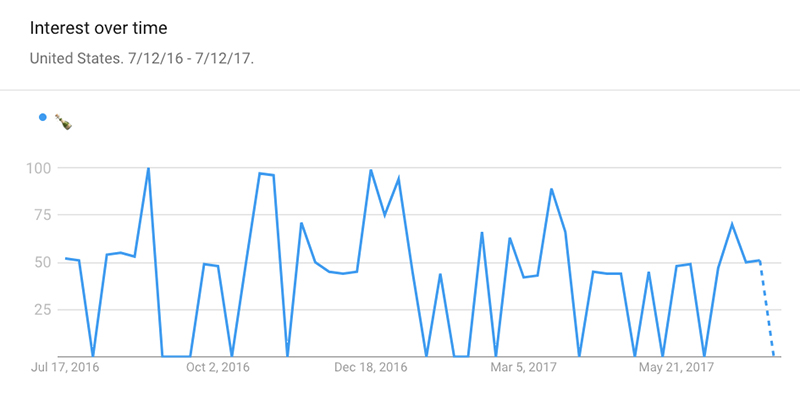
When people think of using the emoji that symbolizes popping bottles of sparkling wine, they’re thinking holidays or summertime. Interest in the emoji spikes in the fall and just before Thanksgiving when more people are with family and friends — and it doesn’t go down until after the holidays. Then it spikes again in April and May when the weather starts to heat up again when it’s perfect weather for popping a bottle on the rooftop or hitting the summer music festival circuit.
However, the emoji is used pretty steadily. There are, of course, dips in use, but there’s general interest between the summer spikes and the holiday peaks. The same is true since the emoji was first revealed in 2015.
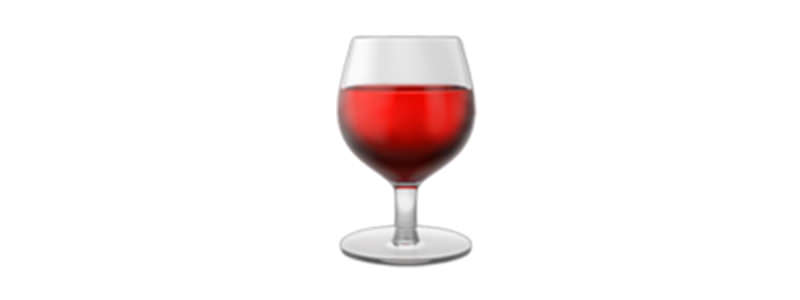
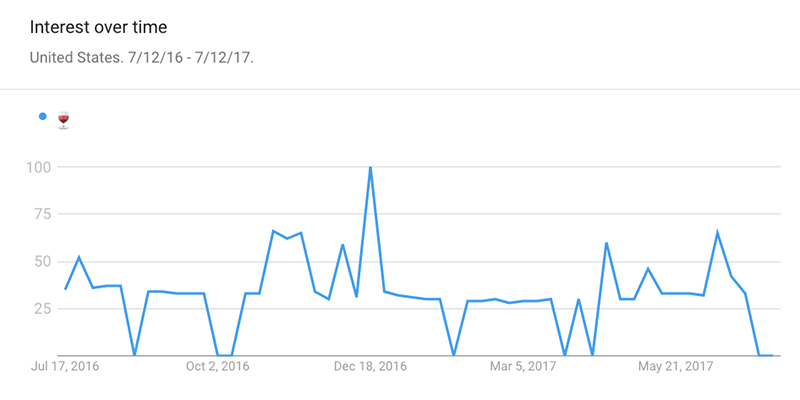
When it comes to wine, it’s pretty much all wine, all the time. The wine emoji sees a sustained popularity throughout most of the year with a very small dip in the early spring months (more beer weather anyway, if you ask me) and right after the New Year.
December was the most popular month for the emoji in the past 12 months, with Thanksgiving close behind. The same trend is seen over the past five years, with summer months and the holiday season showing the strongest. One of the most popular times for the wine emoji? February 2014. Hello Valentine’s Day wine dates (also, perhaps not so coincidentally the same year that Tinder processed one billion swipes).
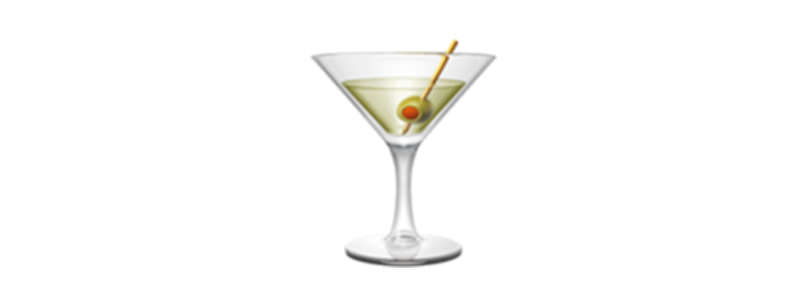
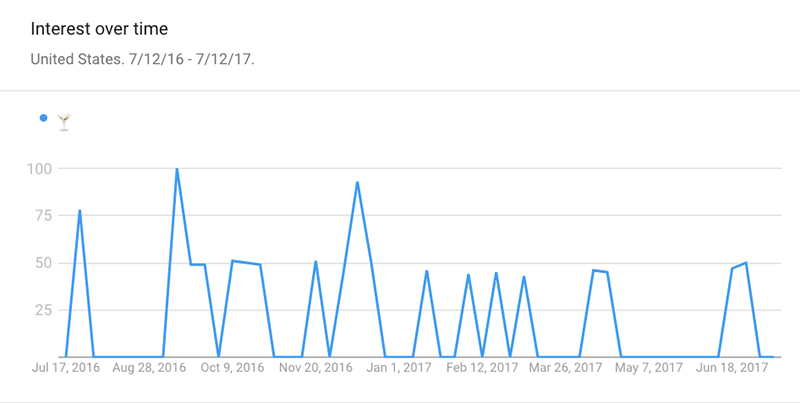
The Martini emoji sees its most use in the fall, winter, and holiday months. There are spikes around Christmas and Thanksgiving, and slightly lower spikes in the summer. This may be due to the lack of specific cocktail emojis in general, not a true love for summer Martinis.
The Martini emoji is one of the oldest drinking emojis, and was in the original set. So in the past, before there were all the beer and wine options, expressing that you were drinking could only be done through the Martini emoji. That might be one reason why, since 2004, the Martini emoji has had surges during summer (read: peak drinking) months.
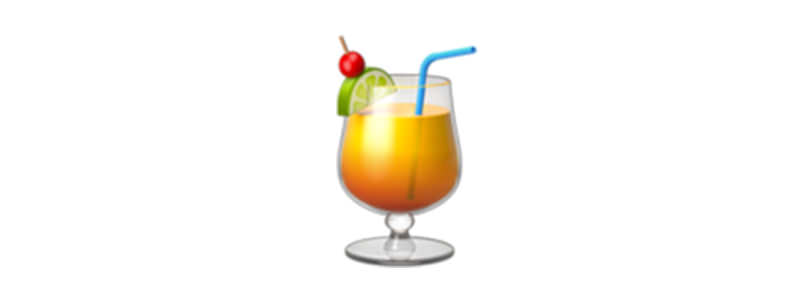
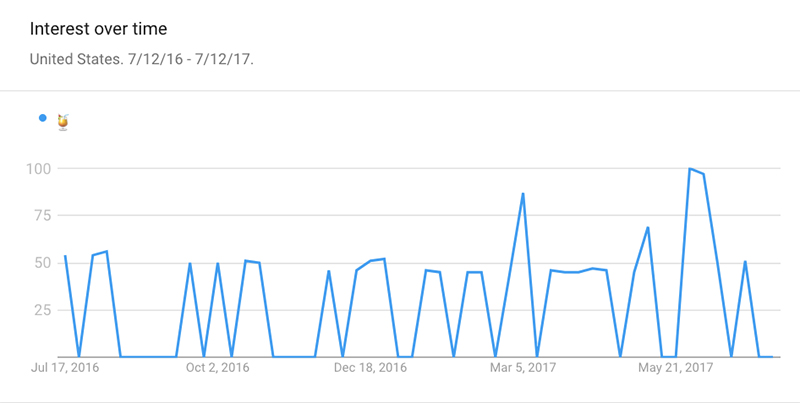
Interest in the tiki emoji is strongest in the spring. If this were the 1980s, though, this might be a different story filled with all tiki, all the time — even more all the time than it already is with big spikes during the month of spring break and the start of summer.
The tiki is one of the older drinking emojis, and there was more interest over the past five years than the past 12 months. One reason might be similar to the Martini emoji, but another might be because of the tiki resurgence from 2013 to 2015. WIRED published their rise-and-fall-of-the-tiki story in summer of 2014, and Eater published theirs in summer of 2015. People got the use out of their systems, though, because by the summer of 2015, interest drops back off before returning to normal in 2016.
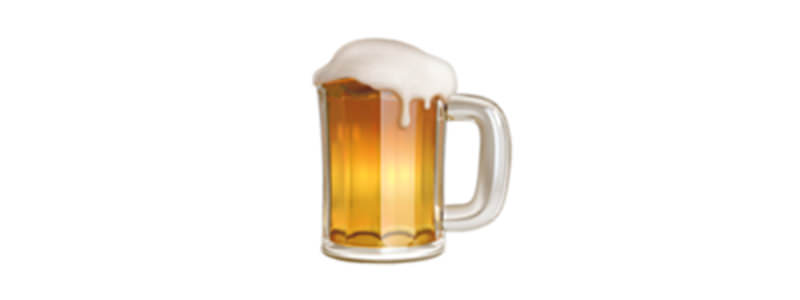
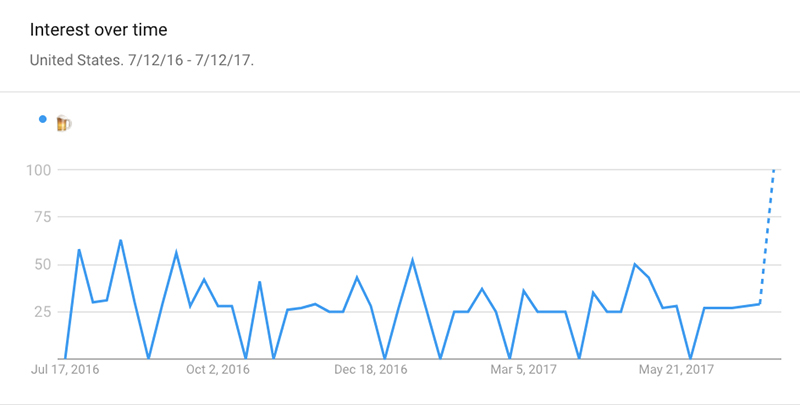
There’s rarely a bad time for a beer, and interest in the beer emoji proves that. According to Google Trends, interest had a steady number of peaks over the past 12 months. Interest rode steady through the summer, rose a bit over the holidays, then went returned back to it’s normal sustained interest after January.
In 2012 and 2013, the biggest peaks in interest were in spring break months and the summer, while more recently the beer emoji has seen strong interest in November and December.
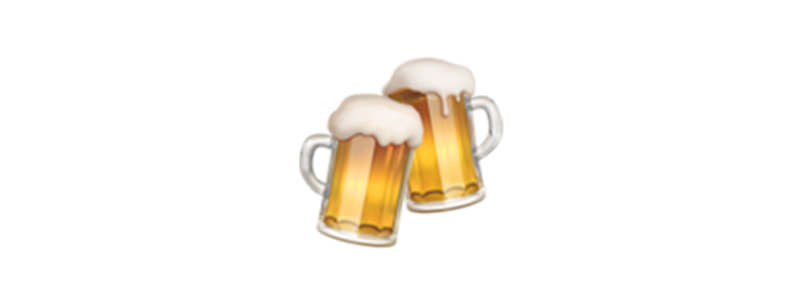
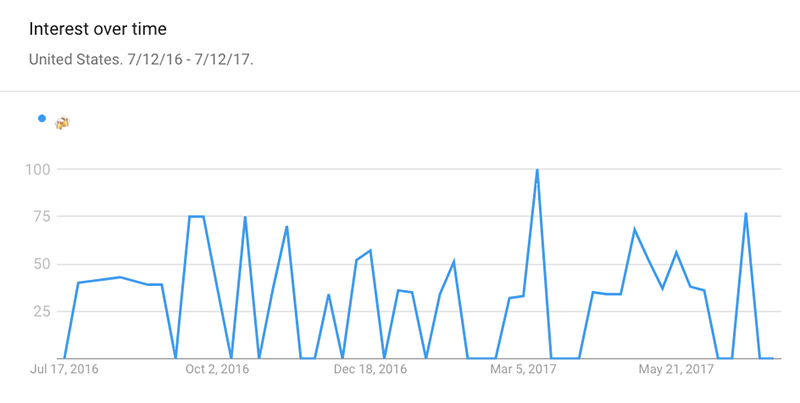
Logically, you’d expect the cheersing beer mug emoji and the beer mug emoji to rise and fall at similar times. Logic wins out here, but the cheers emoji saw higher peaks and bigger falls. The cheersing emoji had the most sustained interest from March and into the summer of 2017 (with two slight dips) with a noticeable spike during the week of the presidential election and the holidays.
Over the past five years, things run pretty much the same, according to Google Trends, with spikes around spring break and summer.
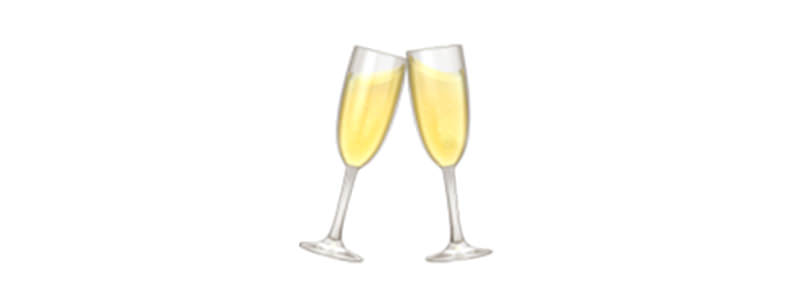
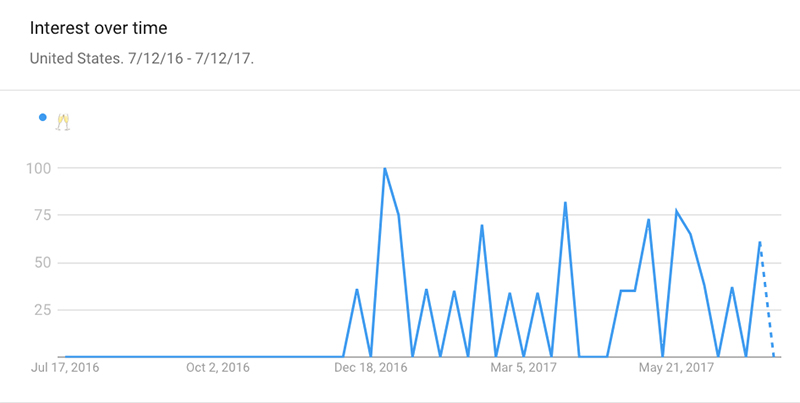
Interest in the clinking Champagne glasses emoji is more predictable than a low-budget horror movie. Interest peaks in the last week of December and the first week of January (finishing off those final unopened bottles, perhaps? Or bragging about all of the Champagne toasts the week before?) and then sees another surge of interest during the week of Valentine’s Day.
It’s one of the newest emojis, though (December 2016), so perhaps people will get more into it over time as Americans start drinking more sparkling wine. Sparkling wine, after all, is a drink best served throughout the year, not just special occasions — and the recent summer spikes prove I’m not the only one who thinks that.
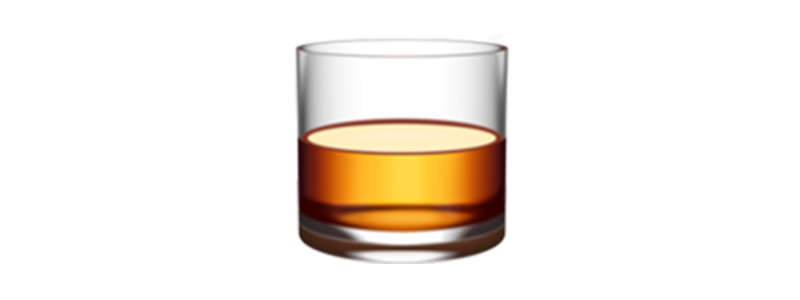
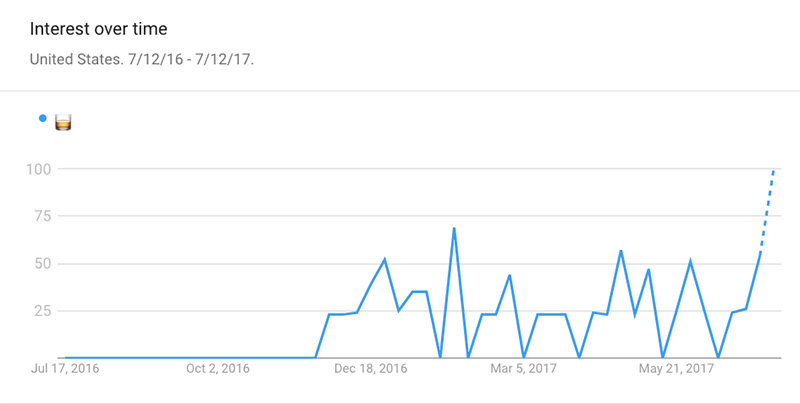
The whiskey glass came out in December 2016 with the clinking Champagne glasses. That doesn’t mean it has the same fate, though. From the month it’s released, the whiskey tumbler has most sustained interest throughout the year with the most interest coming in January.
It’s the only emoji that hints at one specific liquor. America has been going through (and is still going through) a brown spirits revival, and it’s a safe argument to say that now is the best time to be a bourbon lover. The whiskey emoji is on track to be one of the most popular emojis out there — cocktail renaissance be damned.
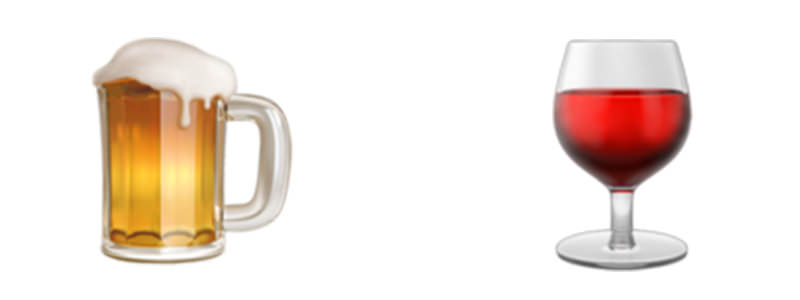
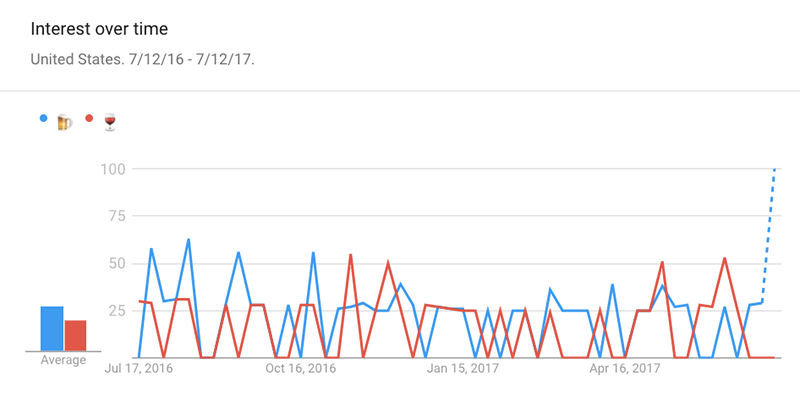
Beer is the most consumed beverage in the United States, and there’s also more interest in the beer emoji. The wine emoji sees comparatively more interest, however, during times around Valentine’s Day and the last week of December.
The story is relatively the same over the past five years. Beer historically edges out wine (especially in the summer months), but interest in the wine emoji is becoming increasingly popular comparatively. The times they are a changin’.
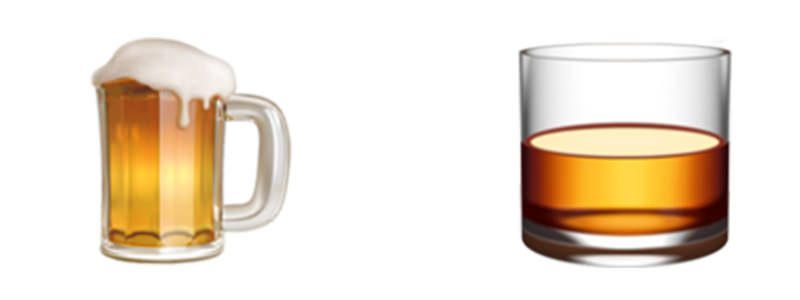
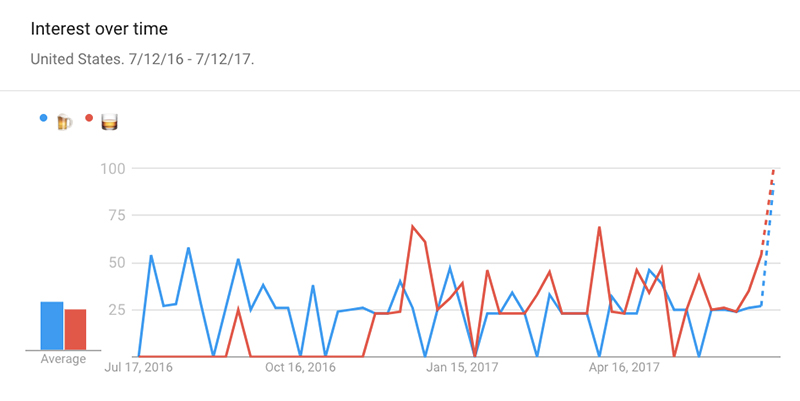
Wine is slowly gaining on beer (expressed through emoji interest on Google Trends, at least), but beer has nothing on the rapid interest in the whiskey glass emoji.
From the moment that the whiskey glass emoji is released, it has comparatively more interest than beer at multiple points of 2017.
